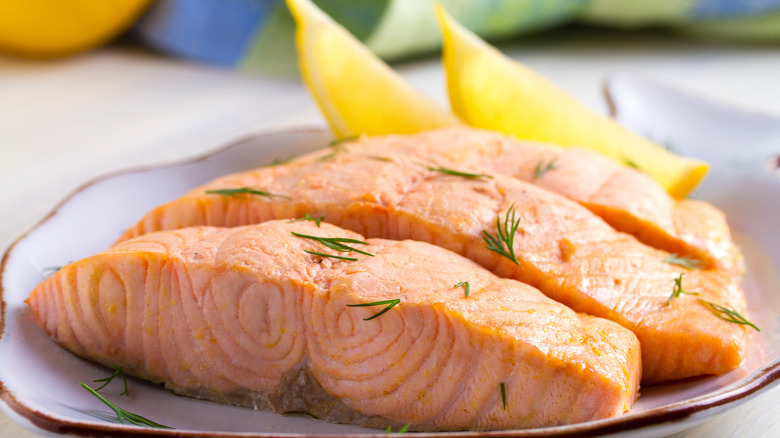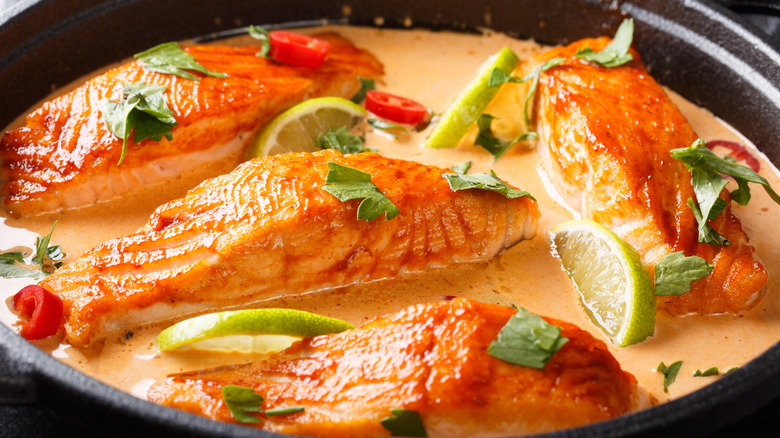The Simple Temperature Trick For Clean, Moist Poached Fish Every Time
When you think of ways to cook a juicy piece of steak, a fresh fish fillet, or even an egg, for that matter, the most obvious cooking method that springs to mind is pan cooking. A hot pan, a stick of butter, a quick sear, and voila! A meal is ready in minutes. But there are several advantages that other cooking methods have to offer, especially if you consider poaching.
The New York Times finds poaching to be a pretty straightforward way to cook fish. Poaching also doesn't require fats like oil and butter, which methods like pan searing or baking do. Instead, poaching requires liquids like stock, and so, it can be an excellent method to use when whipping up low-fat meals.
There's one other advantage that poaching offers, especially when it comes to lean fillets of fish that can go from exquisitely moist to rubbery and overcooked in seconds. Ideally, when you poach fish, you should be considering the temperature of well-cooked fish (via Saveur). The temperature of the poaching liquid should be only a little warmer than that. Because the fish is cooked in a liquid that's almost the same temperature as that of a well-done piece of fish, the chances of overcooking fish while poaching are slim to none.
Controlling the temperature of the poaching liquid is key
While it may be hard to overcook fish when you're poaching it, there are ways to ensure that the fish is perfectly moist every single time. According to "On Food and Cooking" author Harold McGee, the key is in the temperature of the cooking liquid (via The Philidelphia Tribune).
McGee recommends beginning with liquid that's just under its boiling point and then popping the fish in to quickly get rid of any germs. While there is the option to continue poaching the fish on low heat, McGee recommends taking the pot off the heat, stirring in some additional cold liquid to reduce the temperature by 150 or 160 degrees, and letting the fish cook and cool down gently with the temperature of the poaching liquid. Doing so, he says, ensures that the fish remains moist "since you won't encounter the same kind of surface evaporation that happens when a hot piece of fish is exposed to air."
The New York Times adds that poaching is an excellent cooking method when you want to serve cooked fish at a cool temperature and McGee agrees. He says that, when poached well, the fish will remain just as moist in the refrigerator for up to two days, meaning you can cook the fish in advance for meal prep or eat it cold on hot summer days!

